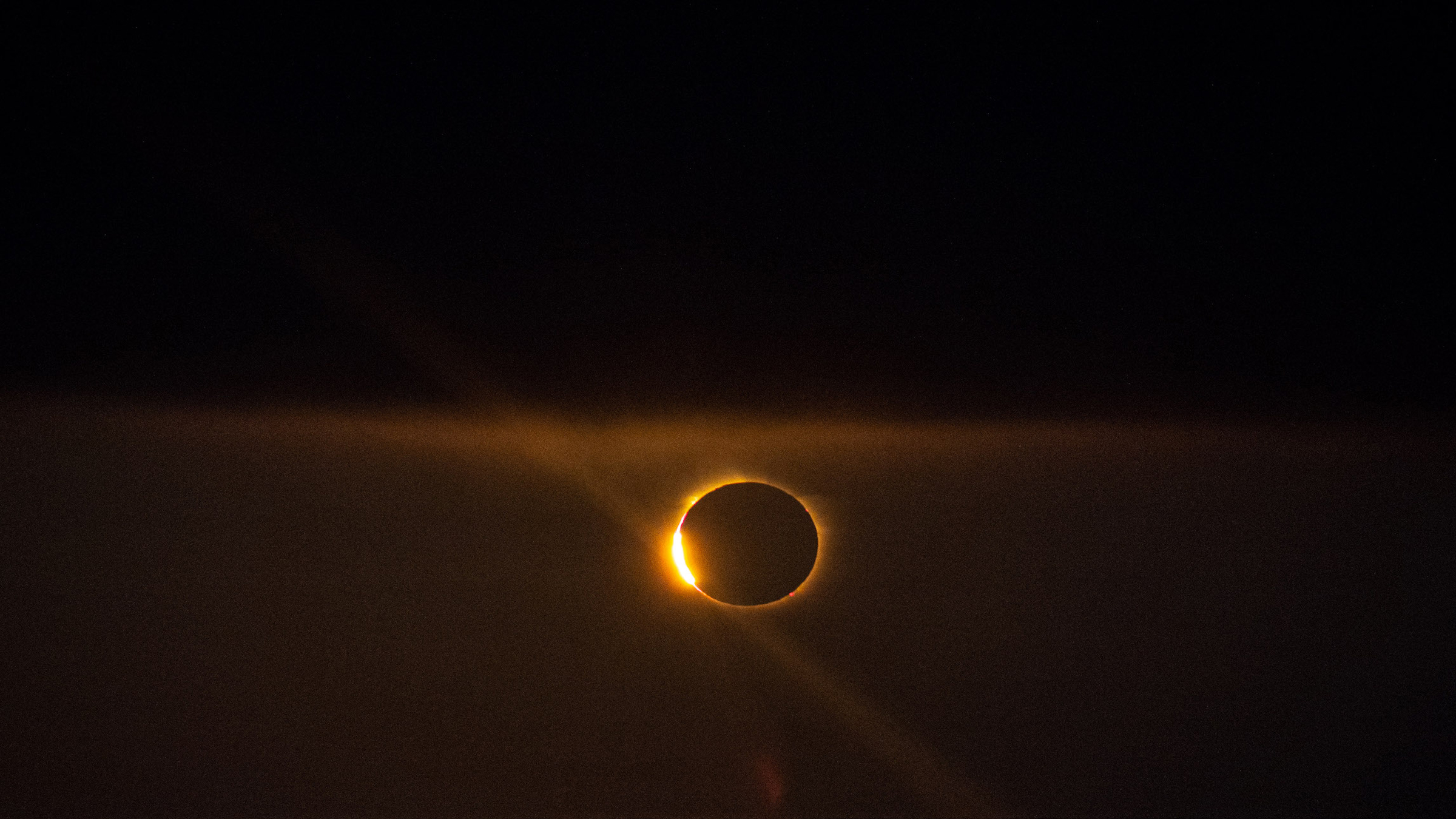Dazzling photos of the solar eclipse from Antarctica
A few people (and a lot of penguins) experienced totality.

On Dec. 4, 2021, a total solar eclipse dazzled a few thousand lucky people in Antarctica and countless penguins, who got to witness nearly two minutes of totality as the moon blotted out the sun's light.
During a total solar eclipse, the sun, moon and Earth line up (in that order), allowing the moon to block the sun's rays from reaching part of Earth. In this case, that swath of Earth was Antarctica: the land of glaciers and penguins.
Many of the below photos are from photographers aboard Lindblad Expeditions' two polar passenger vessels, the National Geographic Resolution and the National Geographic Endurance. Those aboard the vessels saw the partial solar eclipse begin at 2 a.m. EST (0700 GMT), totality occur at 2:44 a.m. EST (0744 GMT), and the partial eclipse end at 3:06 a.m. (0806 GMT), according to NASA.
The next total solar eclipse — happening in about 18 months on April 20, 2023 — will pass over parts of Southeast Asia and Australia, according to timeanddate.com, meaning a lot more people will get to see the celestial show.
Related: Photos: 2017 Great American Solar Eclipse
Rising above the horizon
A crescent sun rises over the Antarctic horizon during the solar eclipse on Dec. 4, 2021.
A "bite" of the sun
The sun looks like a crescent as part of the moon's dark umbral shadow takes a "bite" out of it on Dec. 4, 2021. The best places to see this solar eclipse were Antarctica and its surrounding waters, as well as parts of Australia, New Zealand, Argentina and South Africa.
Get the world’s most fascinating discoveries delivered straight to your inbox.
"On this eclipse, the sun is gonna rise above the horizon and it will be like a smile looking at you because it will be a crescent sun," meteorologist Jay Anderson, said in a video produced by Lindblad Expeditions.
The sun peeps out during the solar eclipse on Dec. 4, 2021.
Diamond ring
The so-called diamond ring effect occurs as the moon's shadow continues to pass over the sun, as seen from Antarctica on Dec. 4, 2021.
During totality, seen here from the Dec. 4, 2021 solar eclipse, you can look directly at the sun without injuring your eyes. The sun's superheated corona layer is visible around the eclipse.
Penguins everywhere
A whole lot of penguins in Antarctica saw the total solar eclipse.
Union Glacier camp
Chilean and U.S. scientists look at a solar eclipse from the Union Glacier in Antarctica on Dec, 4, 2021.
Big vessel
Lindblad Expeditions' polar passenger vessel, the National Geographic Endurance.
Editor's note: Updated at 12:01 p.m. EST on Dec. 7 to clarify that it was the moon itself and not its shadow that blocked the sun's light.
Originally published on Live Science.

Laura is the managing editor at Live Science. She also runs the archaeology section and the Life's Little Mysteries series. Her work has appeared in The New York Times, Scholastic, Popular Science and Spectrum, a site on autism research. She has won multiple awards from the Society of Professional Journalists and the Washington Newspaper Publishers Association for her reporting at a weekly newspaper near Seattle. Laura holds a bachelor's degree in English literature and psychology from Washington University in St. Louis and a master's degree in science writing from NYU.












